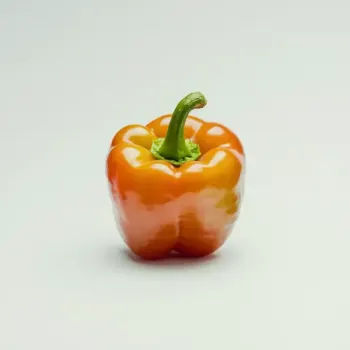The "Pepper vs Pepper" refers to the comparison between black and white pepper in cooking, highlighting their flavor profiles, culinary uses, and the impact on the visual appeal of dishes.

Black pepper, derived from the dried fruit of Piper nigrum, is a staple in kitchens worldwide. Known for its sharp, slightly woody flavor, it's used to add both heat and depth to dishes.

White pepper comes from the same plant but is made from the seed after the dark outer skin is removed. It offers a milder, less complex flavor, often chosen for its ability to blend seamlessly into light-colored dishes.
Black pepper provides a robust flavor with a pungent aroma, ideal for a wide range of dishes. White pepper, with its subtle profile, is preferred in white sauces, mashed potatoes, and certain soups for aesthetic reasons.

Your ultimate Recipe Box, Meal Planner, and Cooking Class all in one
Best used in robust dishes like steaks, stews, and barbecues. Its bold flavor complements red meats and hearty vegetables. Crushed black pepper adds texture and a burst of flavor. Perfect for white meat dishes such as chicken fricassee or creamy pork sauces. It subtly enhances the dish without overpowering the delicate flavors.
Enhances the natural flavors of seafood like grilled fish, shrimp, and crab. A light sprinkle can add an earthy touch to fresh seafood dishes. Ideal for delicate seafood sauces and chowders where the color of black pepper might be visually intrusive. It brings warmth without changing the dish's visual appeal.
Goes well with roasted vegetables, hearty lentil soups, and pasta dishes, adding a spicy kick that enhances the natural veggie flavors. Works well in pureed soups, white sauces, and tofu scrambles, providing a subtle, peppery note without the speckled appearance.
Both black and white pepper contain trace amounts of nutrients and are low in calories, making them a healthy way to add flavor to any dish.
| Nutrient | Black Pepper ( per Teaspoon ) | White Pepper ( per Teaspoon ) |
|---|---|---|
| Fat | 0.1g | 0.1g |
| Sodium | 0.4mg | 0.3mg |
| Calcium | 11.9mg | 3.2mg |
| Protein | 0.2g | 0.2g |
| Calories | 5.7 | 7 |
| Carbohydrates | 1.4g | 1.6g |
White pepper is often used in light-colored dishes, such as white sauces or mashed potatoes, for aesthetic reasons as it blends in without adding black specks, and offers a milder flavor.
Yes, you can substitute them for one another, but keep in mind that black pepper is more pungent and can affect the color of your dish.
Yes, black pepper is sharper and more complex, while white pepper is milder and less pungent.
Black pepper is versatile and suited for a variety of dishes, from meats and marinades to robust vegetable dishes and sauces.
White pepper is best suited for light-colored dishes where a milder flavor is desired and visual appearance is key, such as white sauces, soups, and mashed potatoes.